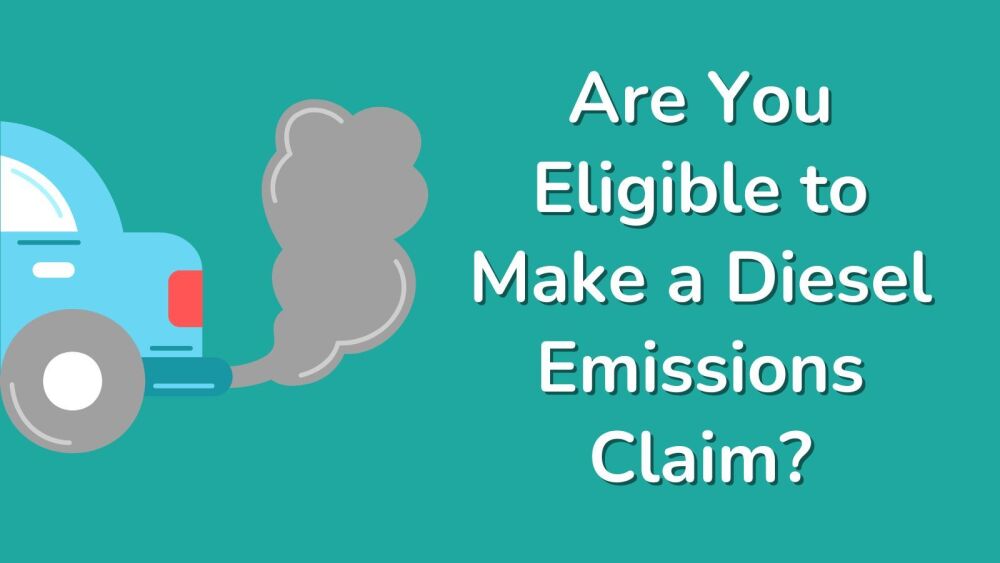Are You Eligible to Make a Diesel Emissions Claim?
Posted on
Are you one of the unfortunate souls who was unknowingly a part of the diesel emissions scandal? Due to this unlucky event, diesel owners are searching for answers and restitution! And if you’re here, then you must be one of them.
Let’s look into whether or not you are eligible to make a claim.

Determining Your Eligibility
The first step is an obvious one: find out if you’re even eligible. It’s the key to unlocking the whole thing. So, let’s go through the process and make sure you understand what the essential criteria is.
Vehicle Identification
Figuring out if you’re eligible is fairly straightforward. You know that nifty little—well, it’s actually pretty long—number that every vehicle has stamped on it? Yes! The vehicle identification number, or VIN. This is going to be your special code and will help you learn whether or not you’re eligible for a claim.
Why is your VIN important? Well, manufacturers often publish lists of specific models that are included in claim-worthy events. So, finding your VIN may lead you straight to a list that gives you the answer right away.
-
Check Your VIN: Use official resources to match your vehicle's VIN with the affected models.
-
Model and Year: Verify that your vehicle's make, model, and year fall within the specified range.
Ownership Criteria
Another important eligibility criteria is ownership. You have to be the owner of the vehicle in question during the dates specified by the emissions claim program. What if you’re the new owner of a vehicle that is eligible, but you weren’t the owner during the specified dates? Sorry, not eligible.
When you file your claim, you’re going to need to provide proof, through documentation, that you owned or leased the vehicle during those dates. If you can’t, your likelihood of eligibility is going to fall drastically.
-
Ownership Proof: You'll have to provide documentation that you owned or leased the vehicle during the affected period.
-
Documentation may include: Vehicle registration, sale or lease agreement.
-
Time Frame: Your ownership must coincide with the dates specified by the emissions claim program.
Impact Assessment
Something else that will affect your eligibility is whether or not the emissions breach directly impacted you. What does that mean? Well, usually it means you’ve suffered financial or other losses due to the issue. Some handy examples include:
-
Financial Loss: You may have paid more for a vehicle that was falsely marketed as 'clean diesel'. Yikes.
-
Performance Issues: Your vehicle's performance might have been affected after remediation efforts to correct the emissions fault. That’s frustrating.
Now, each case is going to be unique, so the details might vary. That said, by taking some proactive steps, like checking your VIN and gathering documentation, you’re well on your way to a successful emissions claim.
Submitting Your Claim
Alright, time to go through how to make a diesel emissions claim. If you’ve already gone through the steps above, this part will be a breeze. If you haven’t already, don’t worry. Now is the time to grab all of that proof.
Gathering Documentation
Like we talked about before, you’re going to need things like proof of ownership. You’re also going to need to provide records of any services or repairs that were needed that are pertinent.
Here’s a quick list of some important documentation:
-
Vehicle Registration: Your current and past vehicle registration documents.
-
Proof of Ownership: Documents like your title or bill of sale.
-
Service Records: Details of any service or repair related to emissions.
-
Receipts: Proof of purchase and any other related expenses.
Tip: Because you took all that time finding those documents, making some copies would probably be a really good idea!
Claim Process
Okay, onto the claim process. This is pretty straightforward (as long as you have those documents handy!). First, you’re going to go through an eligibility process, where they’ll check to make sure your vehicle model and year are included in the emissions claim program. Next, you’ll fill out the claim form. Make sure to do it correctly! A mistake could cost you that claim.
After you’ve finished filling out the form, you simply submit it. You’ll attach copies of those documents you gathered—remember, they support your claim.
What now? Well, at this point, it’s out of your hands. Your claim will be reviewed by an administrator. This person will ultimately decide your fate. Once the decision is made, you’ll be notified either way.
-
Eligibility Check: Make sure your vehicle model and year are included in the emissions claim program.
-
Claim Form: Complete the claim form accurately, providing all required details.
-
Document Submission: Attach copies of your gathered documentation to support your claim.
-
Review: Your claim will be reviewed by the claims administrator, which may take some time.
-
Notification: You'll receive a notification about the approval or rejection of your claim.
Tip: Be sure to submit your claim within the specified deadline to ensure it is considered.
Conclusion
And there you have it! The hardest part of this whole thing will probably be scrounging up those pesky documents. Once you’ve done that, the rest is a breeze.
